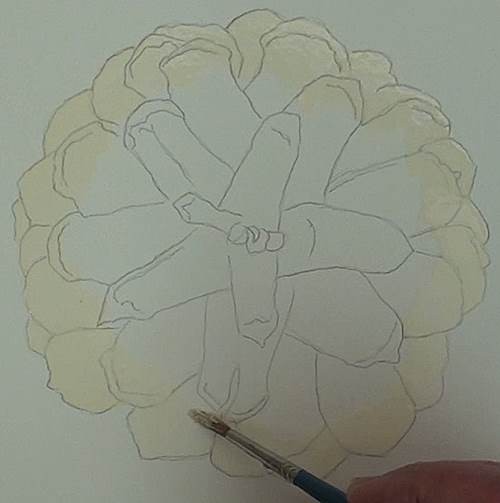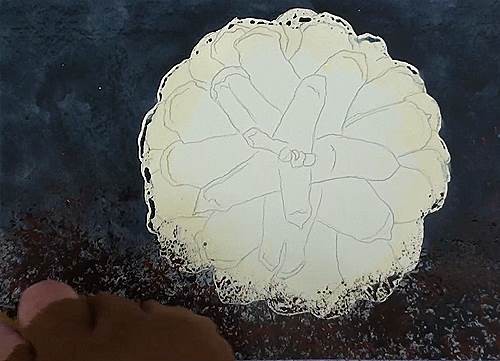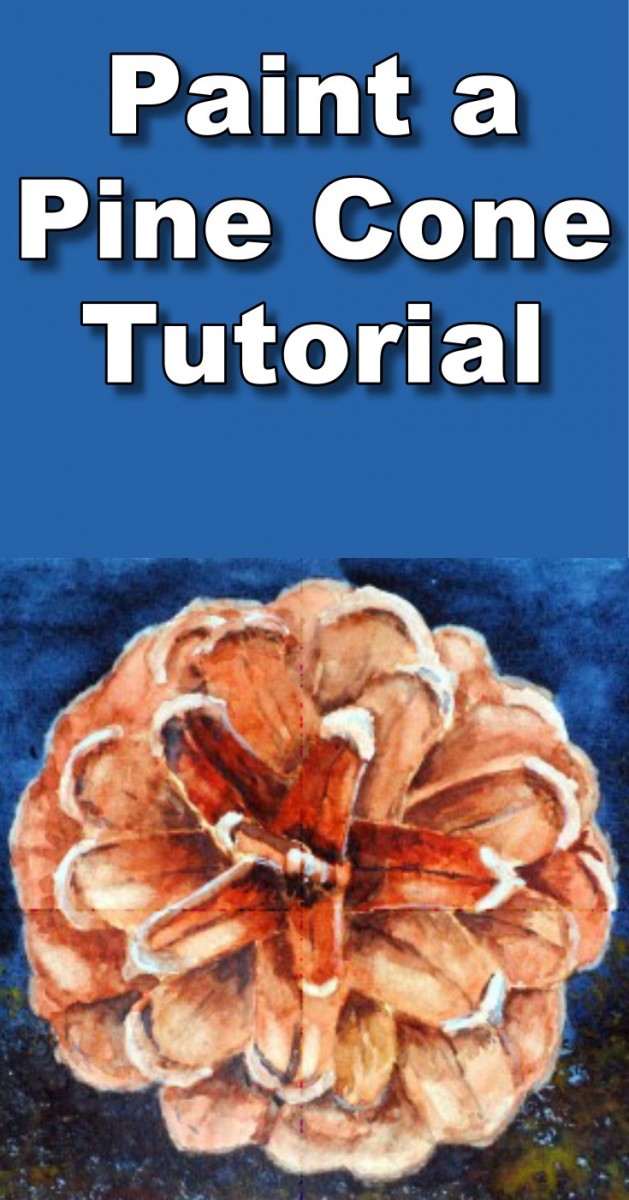Short Class Video
Class Tutorial
Masking fluid

The first thing we need to do is add masking fluid all around the inside edge of the sketch. Make it about 10-15 mm wide (½” approx)
This will prevent the dark paint from spoiling the final painting.
Paint the background

Mix up a very dark mix using Ultramarine Blue with some Burnt Sienna to make a Blue Black. Paint this all around the cone and making it slightly lighter in the foreground as the cone is lying on the ground.
With a sponge, begin dabbing it to create texture. While it is still slightly damp pick up some yellow with the sponge and dab it into the dark mix. It will create a darkish green.. Dry thoroughly and remove the masking fluid.
Add the second layer of masking fluid

We now need to protect the very light areas within the cone with masking fluid. When you have done that and the masking fluid is dry, we can now paint in a light Yellow undercoat. Dry it with a hairdryer.
Paint the scales

With Burnt Sienna and a touch of Blue begin by painting in the darkest parts of the scales to help establish the pattern.
Once this is done, paint the center scales with a light Sienna mix. The center section is the focal point and the darkest.
The scales get gradually lighter and lighter towards the outer ring of scales. Gradually build up the tonal ranges and all the markings. Notice that the scales are slightly depressed along the centrelines, almost like a canoe shape.
Sometimes they will need to be dried every now and then before painting in the more definite and more detailed lines. This is the focal point and needs to be more detailed than all the other scales. Notice how the masking fluid defines the scale tips.
With a damp brush lift out the areas reflecting the sunlight. This adds to the 3D effect.
Paint the next ring

With a slightly lighter mix begin the next row of scales. Notice how the top row of scales throw the shadows on the row below.
It is this play on the contrasts, the darks against the lights, that add to the drama of the cone’s scales. As before, slowly and carefully build up the tonal ranges, as well as the details.
Paint the third ring

With an even lighter colour begin the third row of scales. This set of scales will have less detailing in them and don’t try to add too much detail as this will detract from the center focal point.
Paint the last ring

This outer ring will have almost no details and will be softer in tonal range than the others. We now need to soften the outer edges of the cone to merge into the deep shadow of the background. Continue all the way around the cone.
Because this outer row is almost in the shadow we can make it slightly darker than the previous row.
Darken up the shadows between the scales to lift the upper ones out. Continue touching up and building up all the different tonal ranges. Some shadows are darker than the rest. Add some shadows at the tips of the scales to accentuate the turned-up ends.
Remove the masking fluid off the tips of the scales. Finish off by touching up with some Chinese White.
Final painting

Click the button below to view the real time follow along version of this class:
Pin Me


